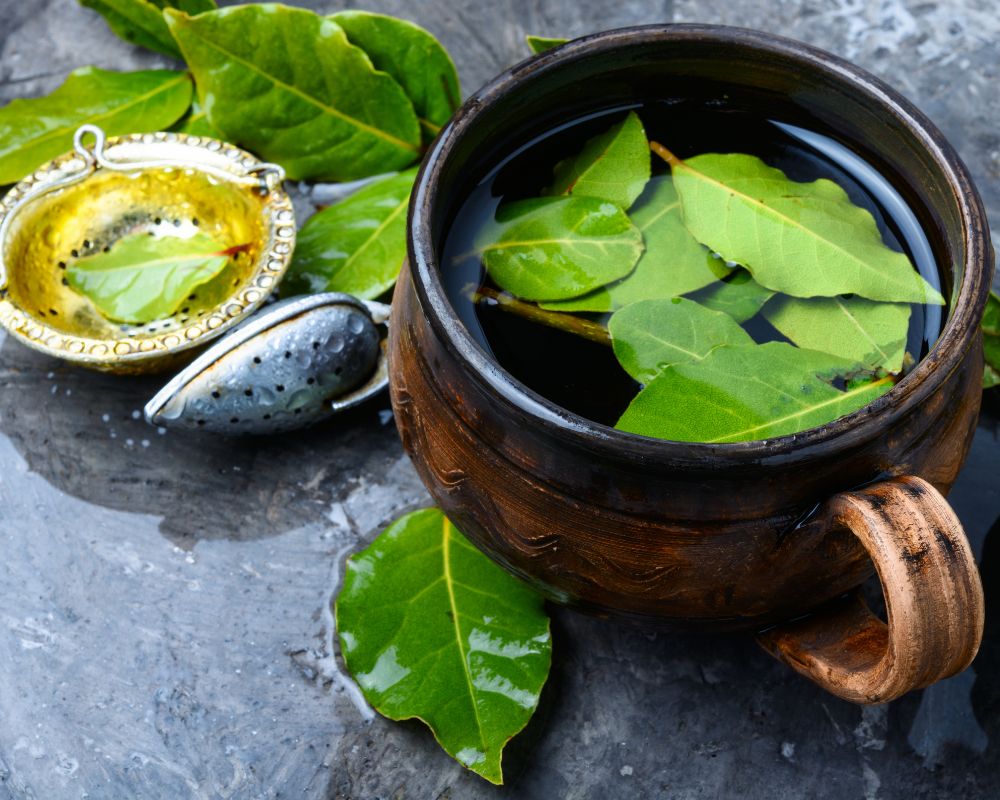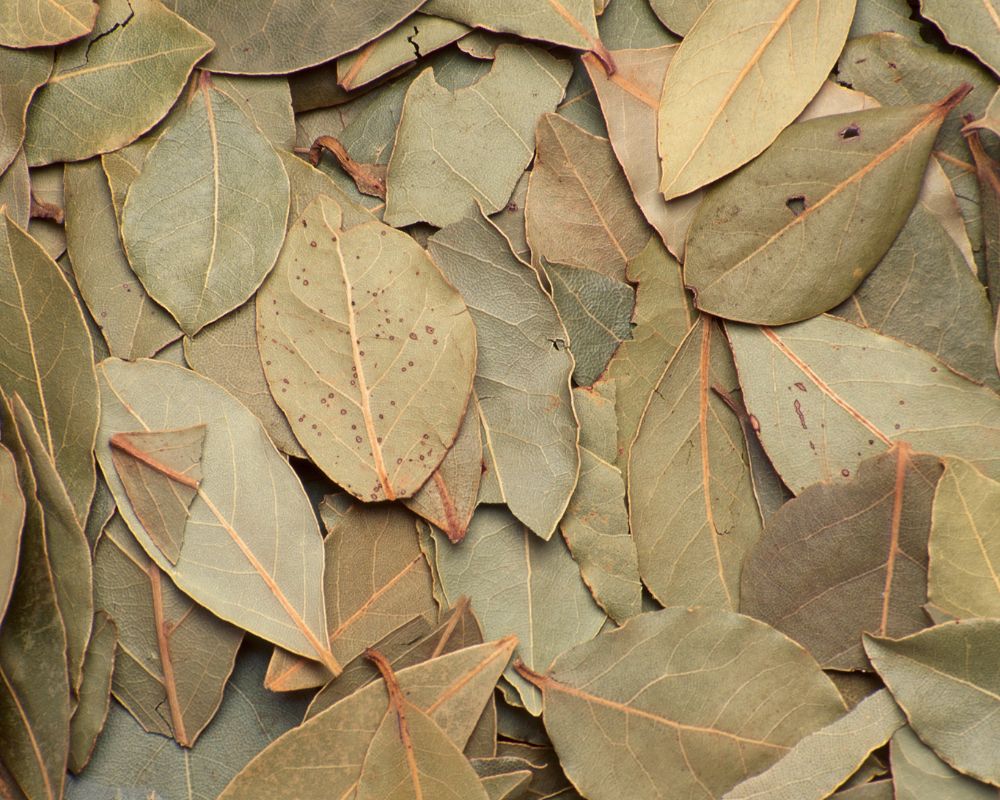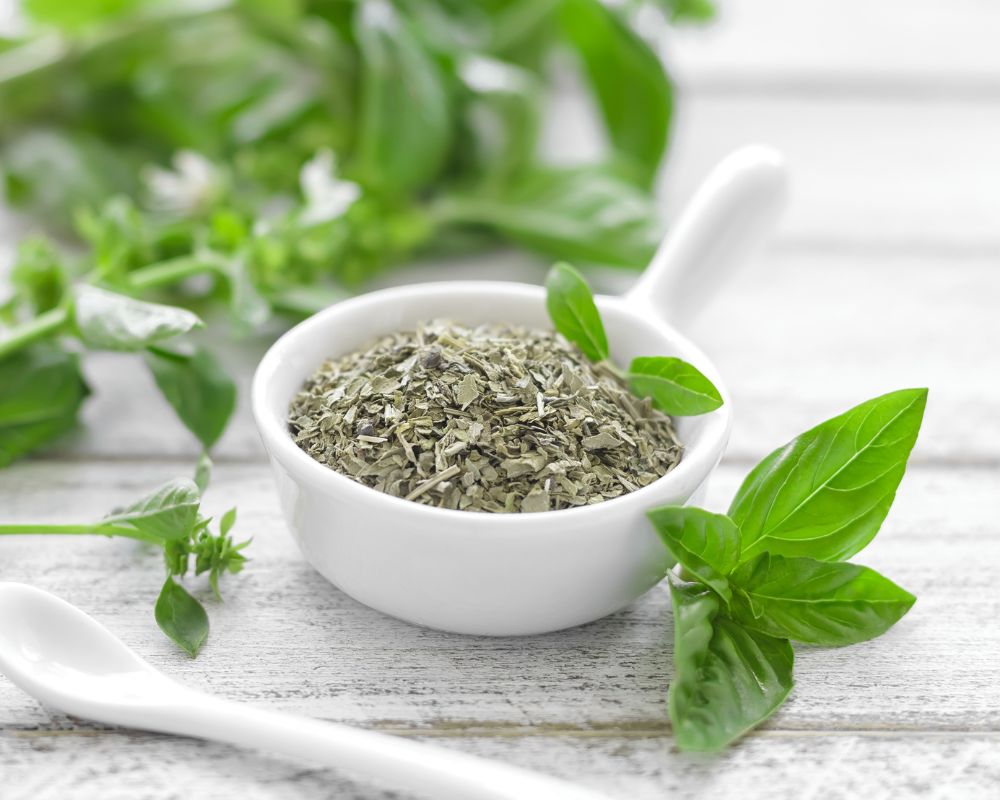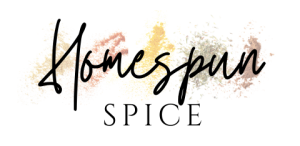Bay leaves are different from basil leaves and should not be used interchangeably. Bay leaves are woodsy and earthy, while basil leaves are minty. People often use bay leaves in slow-cooked stews and basil in tomato-based pasta sauces.
Table of Contents
Is a bay leaf the same as basil?
Bay leaves are leaves of the evergreen bay laurel tree and go by the name laurel leaves. These leaves differ from basil, although people worldwide widely use both.
What is the difference between basil and bay leaf?
| Basil (Thai, sweet) | Belongs to the Lamiaceae family, minty flavor, tiny, round leaves |
| Bay leaves (Turkish, California) | Belong to the family Lauraceae family, have an earthy and woodsy flavor, flat and long leaves |

Bay leaves come from the botanical family Lauraceae, which thrives around the Mediterranean region. Its relatives include cinnamon and camphor. On the other hand, basil is a member of the mint family Lamiaceae (together with thyme, oregano, sage, and rosemary).
Bay leaves have an earthy and woodsy flavor, while basil leaves impart a minty flavor to dishes.
Both leaves also have different varieties. There are Turkish and California bay leaves, and sweet and Thai basil.
Turkish bay leaves (or Mediterranean bay leaves) are the most commonly available dried bay leaf variety in the US. They have a tea-like flavor profile with some menthol undertones.
Fresh bay leaves in the country are typically California bay leaves, which pack a flavor similar to eucalyptus. There’s also the West Indian Bay leaf, which tends to be more aromatic.
Basil’s most commonly used variety is sweet basil. As its name implies, it has a mildly sweet and refreshing flavor profile.
Thai basil tastes like licorice, hence the nickname licorice basil. Meanwhile, holy basil delivers a bitter flavor with peppery undertones.
Bay and basil leaves aren’t just popular aromatics. They also provide many health benefits. For instance, bay leaves are rich in calcium and vitamins A and C, while basil leaves — sweet basil — contain essential oils with anti-inflammatory properties.
Do basil and bay leaves look similar?


The leaves of the bay laurel tree are big, flat, and long. On the other hand, basil has shorter, round leaves. The former look paler compared to the vibrant greenness of basil leaves.
Dried bay leaves have a muted light green color.
Dried basil leaves become dark green. Some are even close to dark brown.
What is the flavor profile of bay leaf?
The bay leaf flavor is woodsy, with some hints of bitterness. It also has an earthy flavor that intensifies in dried form. While a fresh bay leaf will be pungent, its dried counterpart will have more pronounced herbal notes like dried thyme and oregano.
Dried bay leaves are present in many cuisines, including Thai, Mexican, Spanish, and French. People often use bay leaves in slow-cooked recipes, such as stews, soups, and rice and meat dishes. In India, they crush or cut the leaves and use it to make base gravies for curries.
The ground version of bay leaves can be used as marinades and in rubs and spice blends.
What is the flavor profile of basil?
Basil leaves boast a medley of mint, pepper, and anise. Fresh basil leaves lean toward the minty and sweet side. Its counterpart, dried basil, has a strong flavor that tends to be more savory.
Both versions are a staple in Italian cooking. They are common in tomato-based dishes, most notably pasta sauces. Fresh herbs are essential in making pesto recipes and salads. Meanwhile, dried ones pair well with vegetable, fish, and poultry dishes.
Fresh vs. dry bay leaves and basil leaves: comparison


| Bay Leaves | Basil Leaves | |
|---|---|---|
| Origin | Natively grow around the Mediterranean region | Indigenous to India and other Asian countries |
| Flavor | Woodsy and earthy, fresh leaves are pungent, while dried ones carry herbal notes | Minty with notes of anise, pepper, and licorice, fresh leaves tend to be sweeter, while dried counterparts are more savory |
| Dishes | Dried bay leaves are more commonly used than fresh ones, and they enrich the flavor of stews and soups in Thai, Mexican, Spanish, and French cooking | Fresh basil is commonly used in Italian dishes, especially pasta, while dry ones are used in vegetable dishes |
Can you Substitute Bay Leaves and Basil?
Bay and basil leaves have different flavor profiles. Because of this, you should not substitute bay leaf for basil and vice versa. However, there are combinations where both of these leaves are present, such as bouquet garni, a French spice blend.
If you’re looking for an aromatic herb that will be a good substitute for basil, try oregano, tarragon, marjoram, and lemon balm.
On the other hand, bay leaves’ replacements include thyme, boldo, and juniper berries.

